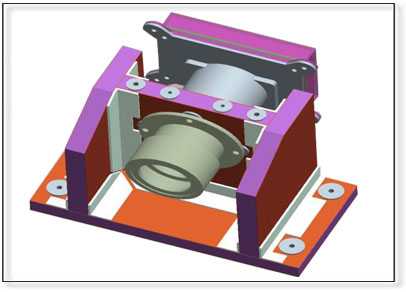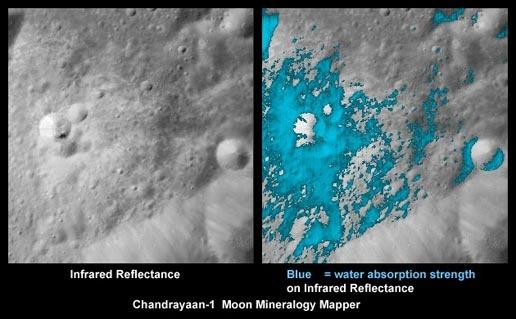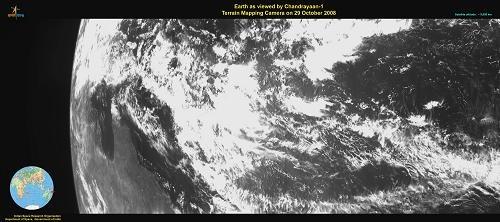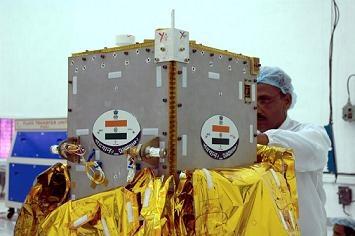
Scientific Objective
The aim is to obtain spectroscopic data for mineralogical mapping of the lunar surface. The data from this instrument will help in improving the available information on mineral composition of the lunar surface. Also, the study of data in deep crater regions/central peaks, which represents lower crust or upper mantle material, will help in understanding the mineralogical composition of Moon's interior.
Payload Configuration Details
The uniqueness of the HySI is in its capability of mapping the lunar surface in 32 contiguous bands in the Very Near Infra Red (VNIR) spectral range of 0.4-0.95�m region with a spectral resolution of better than 15nm and spatial resolution of 80m with swath coverage of 20Km. HySI will collect the Sun�s reflected light from the Moon�s surface through a tele-centric refractive optics and focus on to an APS area detector. For weight reduction and compactness of the system the spectral separation is done using a wedge filter instead of the conventional mode of using prism / grating. The wedge filter is an interference filter with varying thickness along one dimension so that the spectral region transmitted through it varies in that direction. The wedge filter will be placed in close proximity to an area detector. Thus different pixels in a row of the detector will be receiving irradiance from the same spectral region but different spatial regions in the across track direction. In the column direction of the detector different rows will receive irradiance of different spectral as well as spatial regions in the along track direction. The full spectrum of a target is obtained by acquiring image data in push broom mode as the satellite moves along the column direction of the detector. The payload would weigh 4kg and its size is 275 X 255 X 205 mm3.
HySI payload is developed by ISRO.


